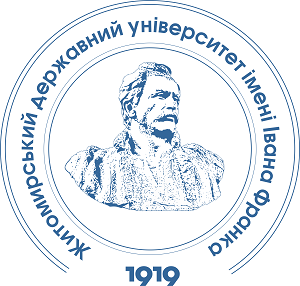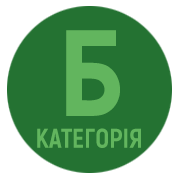CURRENT ANTHROPOGENIC IMPACT ON THE ENVIRONMENT OF THE ZHYTOMYR REGION
DOI:
https://doi.org/10.32782/naturaljournal.10.2024.3Keywords:
Zhytomyr region, environment, anthropogenic influence, pollutionAbstract
This article discusses the dynamics of changes in the natural environment of the Zhytomyr region under the influence of individual factors of anthropogenic load over the past few years. Based on the analysis of pollutant emissions, it was established that the largest part of emissions into the atmosphere comes from mobile sources. The predominant harmful components are Carbon oxides (73%), Nitrogen oxides (13%), non-methane volatile organic compounds (11%), soot (1.6%), and Sulfur oxide (IV) (1.4%). Among stationary sources, the largest emissions into the atmospheric air of the region come from the processing industry, agriculture, forestry and fisheries, the mining industry and quarrying. The main polluters of water bodies in the region are housing and communal services. Exceedances of the maximum permissible concentrations for Ferum, Mangan, KhSK, and BSK5 were recorded in river waters. The radiation state of the waters of the Zhytomyr region in terms of the content of 90Sr and 137Cs is stable and does not exceed the norm. Significant agricultural transformation of the region’s territory negatively affects the quality of soils and entails their degradation. Among the degradation processes, erosion (wind and water) and waterlogging predominate. In the last thirty years, there has been a noticeable trend towards a decrease in the humus content in the soils of the region. Its average value is now 2.07%. It is also recorded that the soils of the Zhytomyr region contain very low level of provision with mobile forms of potassium (average value 40.0 mg/kg of soil) and easily hydrolyzed nitrogen (89 mg/kg of soil). An important problem for the Zhytomyr region is soil acidification. The average value of this indicator in the region is 5.5. Almost 57% of the region’s arable land falls on acidic soils (pH <5.60). Over the past decades, radiation contamination of soils in the region has decreased significantly: overtime contamination with 137 Cs is 0.1%, and 90Sr – 0.5% of the surveyed area. Biotic resources undergo significant transformation as a result of human economic activity. On the territory of the Zhytomyr region, 286 species of plants and 134 species of animals that are in danger have been identified. Military actions had a negative impact on the environment of the region. Since the beginning of Russia’s armed aggression, 17 crimes against the environment have been recorded in the region, and the total amount of damage caused is almost 15 billion UAH.
References
Валерко Р.А., Герасимчук Л.О. Оцінка рівня техногенного навантаження Житомирської області. Вісник Житомирського національного агроекологічного університету. 2017. Т. 1. № 1 (58). С. 39–48.
Екологічний паспорт Житомирської області за 2023 рік [Електронний ресурс]. URL: https://eprdep.zht.gov.ua/Regionalna%20dopovidj%202023.pdf (дата звернення 12.08.2024).
Кашпаров В.О., Голяка Д.М., Левчук С.Є., Берковський В.Б. Зонування територій радіоактивного забруднення після Чорнобильської аварії. Ядерна фізика та енергетика. 2022. Т. 23. № 3. С. 182–194. https://doi.org/10.15407/jnpae2022.03.182.
Нестерчук I.К. Ландшафтно-типологічна структура території Житомирської області. Фізична географія та геоморфологія. 2016. № 1 (81). С. 41–52.
Пацева І.Г., Барабаш О.В., Мельник-Шамрай В.В., Шамрай В.І., Пацев І. С. Аналіз сучасного стану лісових ресурсів у контексті сталого розвитку. Технологiї захисту навколишнього середовища. 2023. № 4 (493). С. 205–211. https://doi.org/10.15589/znp2023.4(493).27.
Регіональна доповідь про стан навколишнього природного середовища Житомирської області у 2022 році [Електронний ресурс]. URL: https://eprdep.zht.gov.ua/Regionalna%20dopovidj%202023.pdf (дата звернення 13.08.2024).
Смілий П.М., Гопчак І.В., Басюк Т.О. Екологічна оцінка якості поверхневих вод Житомирського Полісся. Гідрологія, гідрохімія і гідроекологія. 2021. № 2 (60). C. 41–48. https://doi.org/10.17721/2306-5680.2021.2.5.
Статистичний щорічник України за 2021 рік. Державна служба статистики України [Електронний ресурс]. URL: https://www.zt.ukrstat.gov.ua/ (дата звернення 22.04.2024).
Стратегія розвитку Житомирської області на період до 2027 року [Електронний ресурс]. URL: http://dfrr.minregion.gov.ua/foto/projt_reg_info_norm/2020/01/Strategiya-do-2027-roku.pdf (дата звернення 12.08.2024).
Управління екології та природних ресурсів Житомирської облдержадміністрації. Офіційний сайт [Електронний ресурс]. URL: https://eprdep.zht.gov.ua (дата звернення 13.08.2024).
Khomiak І., Harbar O., Kostiuk V., Demchuk N., Vasylenko O. Synphytoindication models of the anthropogenic transformation of ecosystems. Natura Croatica. 2024. Vol. 33. №. 1. P. 65–77. https://doi.org/10.20302/NC.2024.1.5.
Lavryk O., Volovyk V., Maksiytov A., Tsymbaliuk V. Optimization variations of valley-river landscape-technical systems of the Right Bank zone of Ukraine. Journal of geology, geography and geoecology. 2022. Vol. 31(3). P. 504–512. https://doi.org/10.15421/112246.
Lavryk О.D., Tsymbaliuk V.V., Poshtaruk L.І. Recognition of a landscape techno-sphere as a new geosphere. Український журнал природничих наук. 2022. № 2. С. 85–94. https://doi.org/10.35433/naturaljournal.2.2023.85-94.






